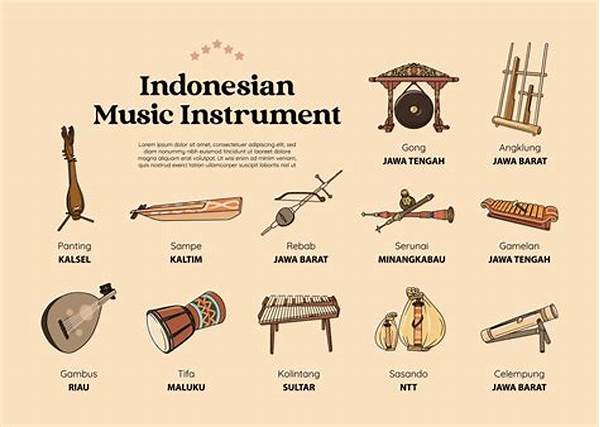Imagine a classroom resonating with the harmonious blend of ancient gongs and flutes, the air filled with melodies that speak of centuries-old traditions. In Indonesia, the cultural education curriculum has ingeniously leveraged iconic instruments, such as the Angklung and Gamelan, to not just preserve heritage but to make learning an enjoyable experience. This unique approach not only piques students’ interest but also inspires a deeper connection with their roots, setting an exemplary model for worldwide educational systems.
Read More : Basic Instruments For Physics Experiments In Schools
Education is often illustrated as the backbone of any culture. It’s where young minds learn about their history, values, and identity. In Indonesia, this is vividly executed by incorporating traditional musical instruments into cultural education. Schools have become vibrant arenas showcasing musical performances, capturing the imagination of students and fostering a sense of pride and curiosity about their national culture. This strategic integration serves as a prime example of how cultural education can be both informative and engaging.
The Role of Traditional Instruments in Indonesian Schools
Incorporating traditional Indonesian instruments in education is much more than just producing beautiful music. It’s a method of storytelling, a channel to convey history, culture, and identity in schools. These instruments, rich with historical significance, allow students to actively participate in keeping their culture alive.
Why Choose Traditional Instruments?
Traditional instruments are chosen for educational purposes for their ability to engage students in a multi-sensory experience. The Angklung, made from bamboo tubes and played by shaking, exemplifies teamwork and cooperation. The Gamelan orchestra, with its array of gongs and metallophones, teaches harmony and discipline. These experiences go beyond conventional teaching methods, offering students a hands-on engagement with cultural practices.
Angklung and Its Educational Charm
The Angklung holds a special place in Indonesian cultural education. Not only is it recognized by UNESCO as a Masterpiece of Oral and Intangible Heritage of Humanity, but it’s also celebrated for its simplicity and profound cultural resonance. By shaking this bamboo instrument, students are connected to a legacy of storytelling and community spirit.
Gamelan: The Heartbeat of Cultural Education
Gamelan showcases the collaborative aspect of music. It teaches students patience and precision, as the ensemble relies heavily on synchronization and teamwork. By learning to play the Gamelan, students appreciate the intricacies of Javanese and Balinese music traditions, fostering respect for diversity within unity.
Benefits of Integrating Music in Education
Music, particularly traditional instruments, offers numerous cognitive and emotional benefits. Students engaged in playing music perform better academically, enhance their social skills, and exhibit increased cultural understanding and sensitivity. Gamelan and Angklung workshops in schools not only cultivate musical talents but also promote a spirit of unity and cooperation.
Testimonials: The Impact on Students
There’s no better way to understand the effectiveness of this cultural initiative than through testimonials. Many students express newfound pride and a deep connection to their heritage. Teachers report increased enthusiasm and participation in cultural activities, demonstrating the powerful impact these instruments have on young minds.
Read More : Instrument Maintenance Checklist For Technicians
Moving Forward with Cultural Education
Continuing to highlight traditional instruments in school curriculums is not just beneficial but essential for preserving Indonesia’s rich cultural legacy. As we look towards the future, the question is not whether to include cultural education but how to do so more deeply and effectively. The framework set by Indonesian schools serves as an inspirational guide for others worldwide seeking to enrich their educational practices.
Conclusion: A Symphony of Culture and Education
In summary, the best instrument Indonesia highlighted in school cultural education stands as a testament to the power of integrating culture and learning. This harmonized approach not only preserves the rich musical heritage of Indonesia but also strengthens students’ connection to their cultural roots, fostering a well-rounded educational experience.
Looking Ahead: Sustaining the Cultural Legacy
To sustain this cultural legacy, ongoing investment in educational resources and teacher training is imperative. Schools can further enhance their programs by incorporating digital technology to share Indonesia’s musical treasures with the world, promoting cultural understanding on a global scale.
The Global Implications
The Indonesian model showcases how traditional instruments can transform cultural education, making it a vibrant and engaging part of the curriculum. By sharing this knowledge globally, we can inspire educational reforms that embrace cultural heritage alongside academic excellence.
By weaving traditional music into the fabric of education, Indonesia not only preserves its rich cultural heritage but also plants the seeds of appreciation and pride in the hearts of its younger generations. This initiative is a brilliant blend of education and tradition, manifesting as a powerful tool for national identity and cultural sustainability.
